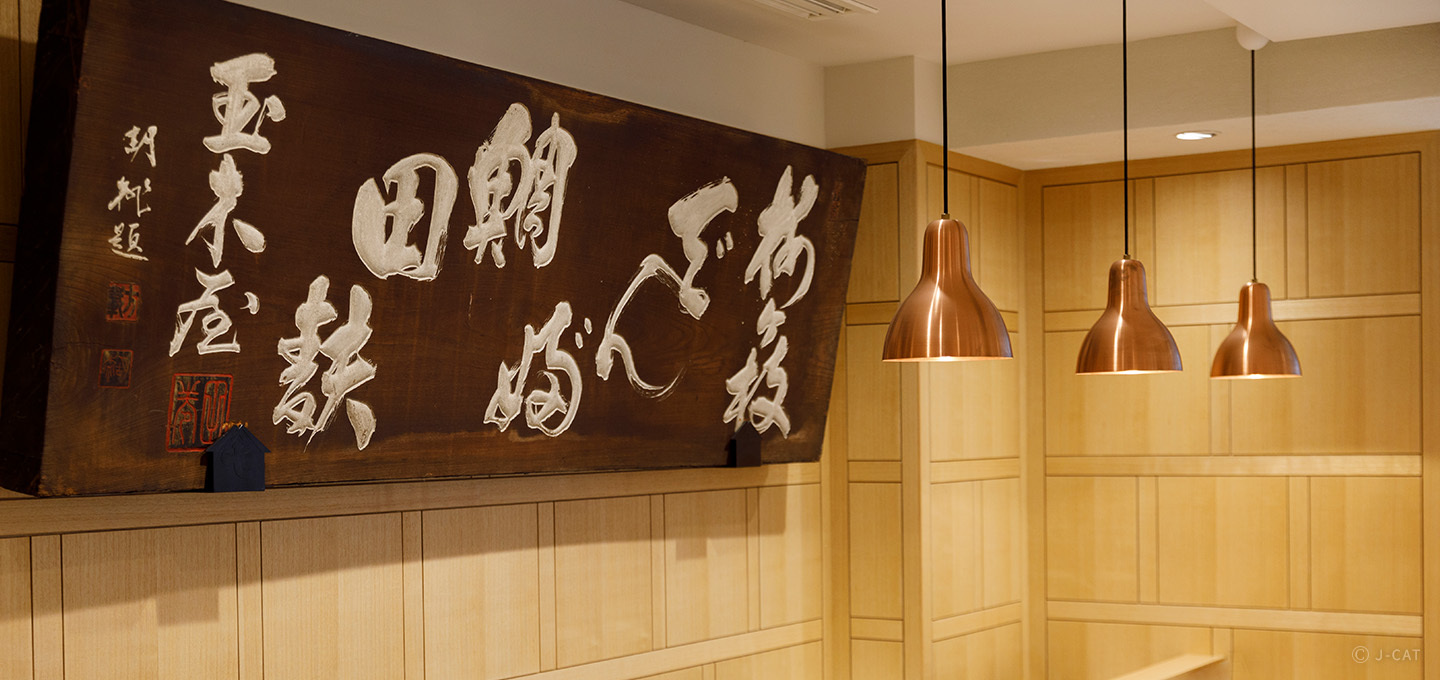
Special Experience
Tokyo
Taste Tsukudani, a Beloved Seafood Delicacy from the Edo Period, & Make Onigiri
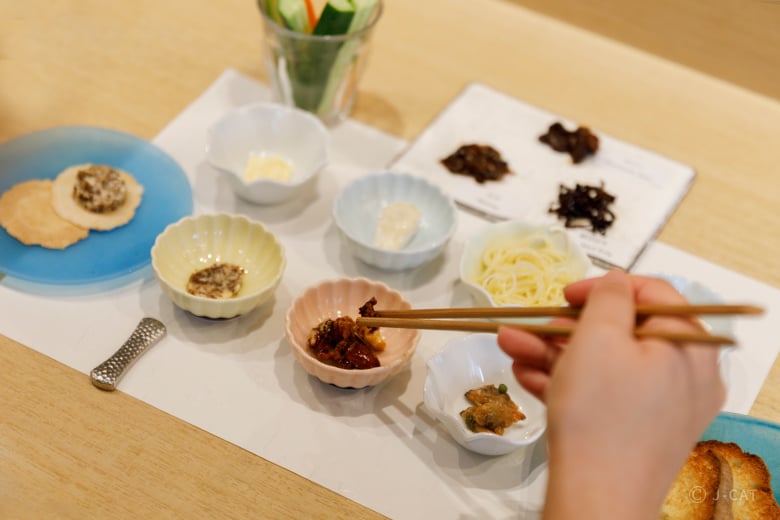
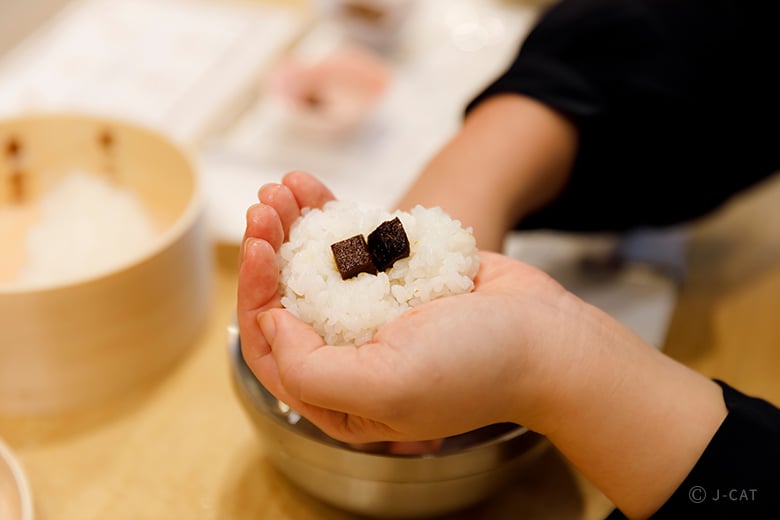
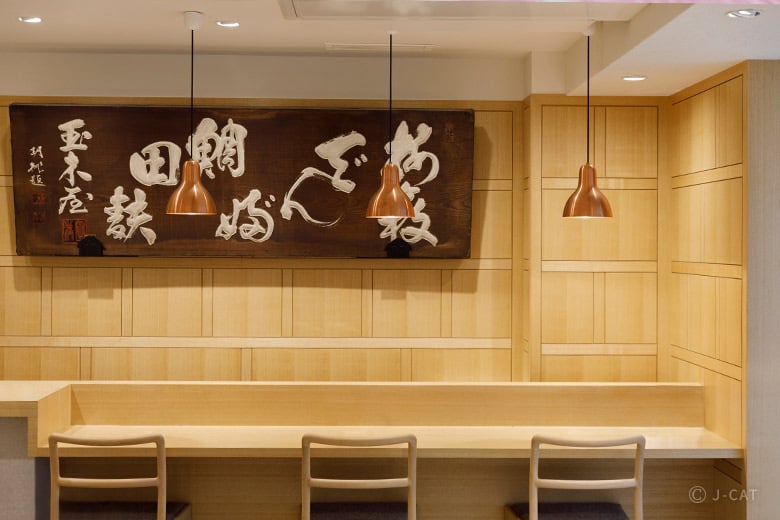
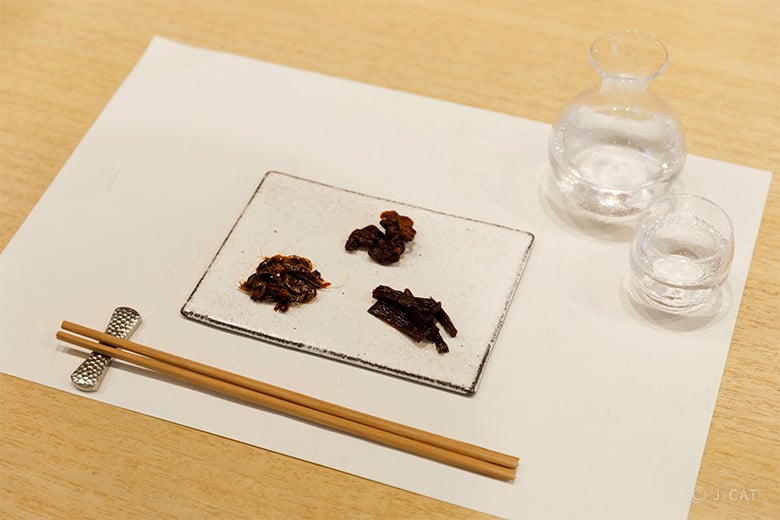
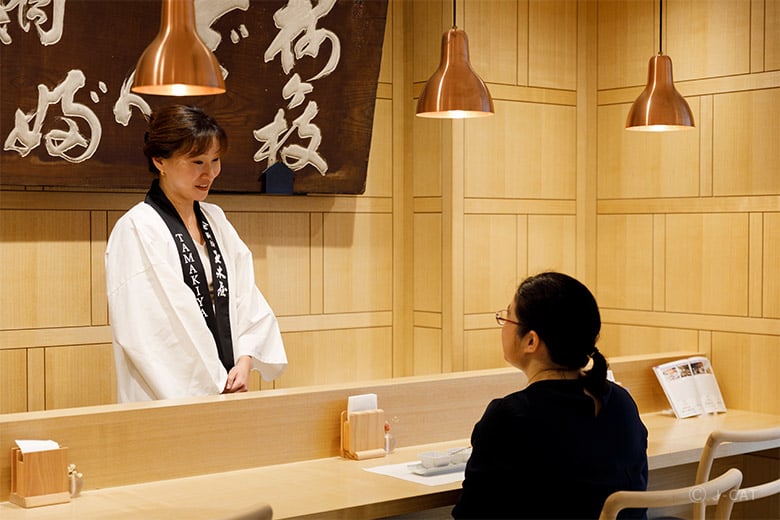
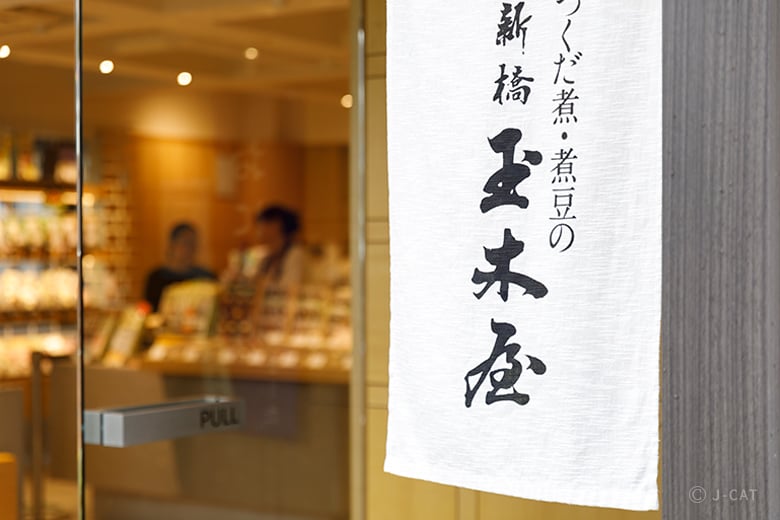
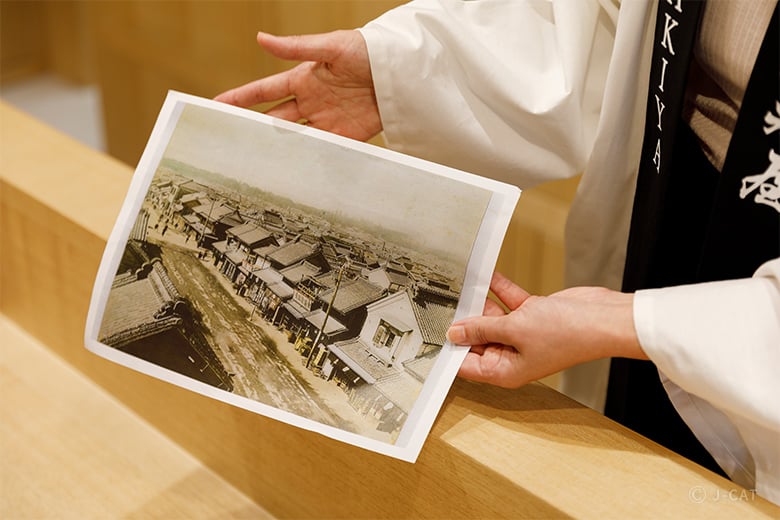
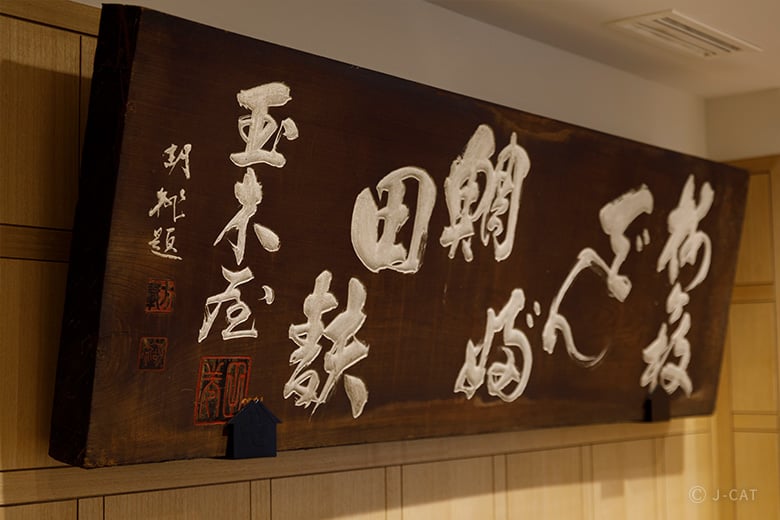
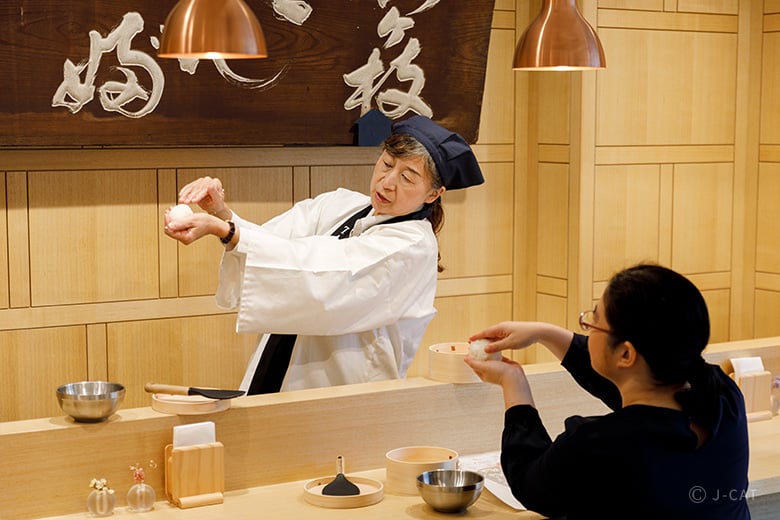
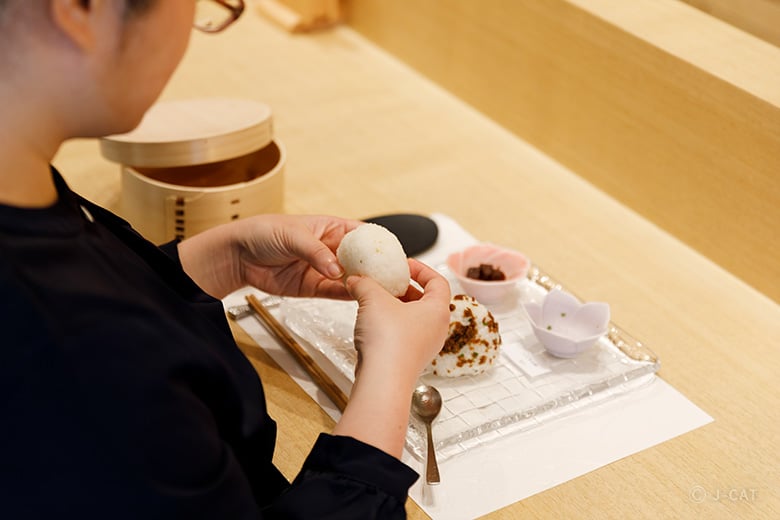
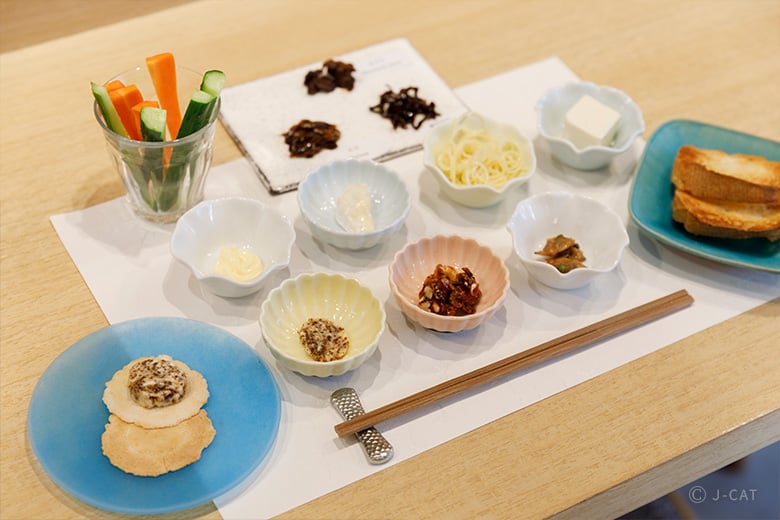
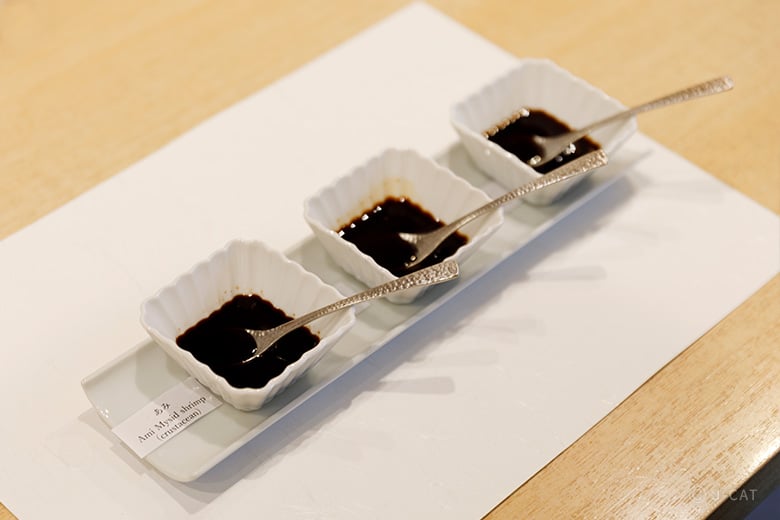
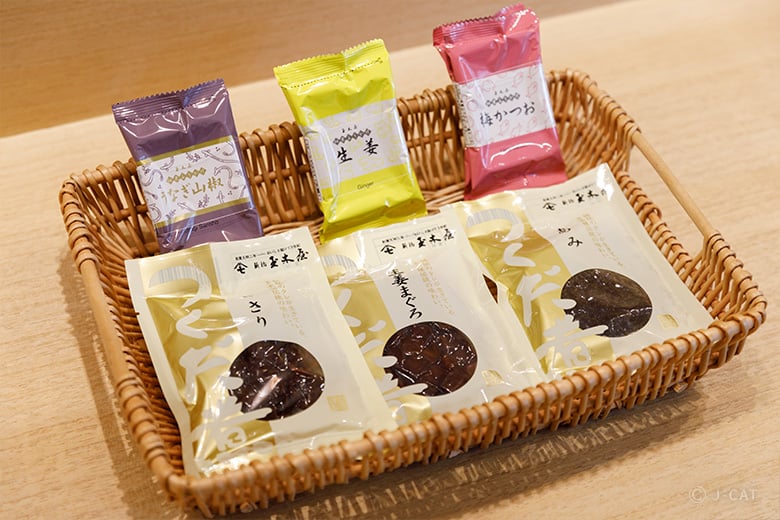
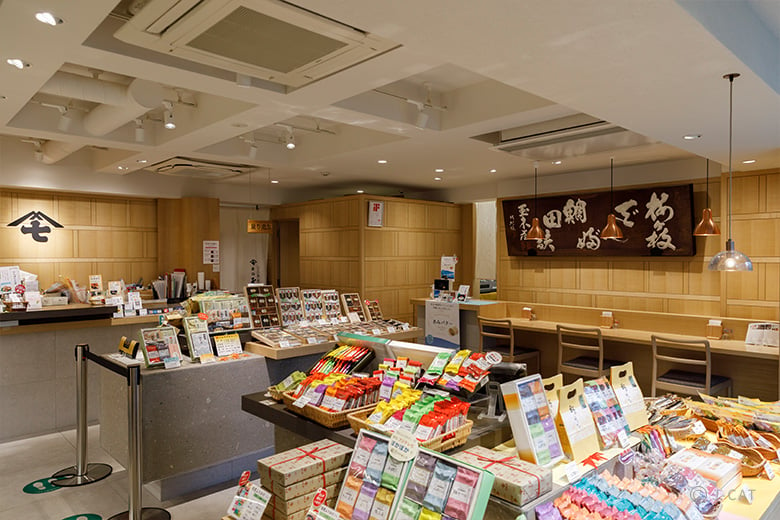














Overview
Taste tsukudani (preserved seafood) in traditional and modern ways at Shinbashi Tamakiya, established in 1782. After learning about the shop’s history from its 10th-generation head, sample its secret sauce and taste its three signature tsukudani. Then, make onigiri rice balls with tsukudani and furikake seasonings, and try tsukudani with various ingredients such as pasta and nuts. Finally, take home a Tamakiya product of your choice as a gift.
Key Features
・Try tsukudani served in an assortment of ways at a centuries-old shop in this Wabunka-exclusive plan
・Trace the shop’s history with its 10th-generation head, and sample its secret sauce
・Learn to make onigiri with the shop’s tsukudani and furikake (rice seasoning)
You may also be interested in this experience in the same location:
Tsukudani & Sencha Green Tea Pairing Experience at a Long-Running Shop in Tokyo
Tokyo
120mins
from ¥13,000 /person
1 - 3 participants
Available in English
Cancel free up to 4 days prior
Details
Taste Beloved Flavors from the Edo Period at Shinbashi Tamakiya
Located in Tokyo’s Shinbashi business district is Tamakiya, a family-owned shop that has been in business since 1782, during the Edo period (1603–1868). Though the shop started out by selling zazen-mame (soybeans boiled in sugar and soy sauce), it is mainly known for specializing in tsukudani, seafood preserved by simmering it in sauce. This is because Tamakiya’s third-generation head was inspired to create tsukudani after observing local fishermen boiling small fish and other seafood to preserve them.

This painting dating back to the Edo period (1603–1868) depicts Tamakiya during its inception in 1782
Through the centuries, Tamakiya’s commitment to creating high-quality tsukudani with no additives or artificial preservatives remains unchanged. At the same time, however, the shop has kept up with changing times. It moved from its original location elsewhere in Shinbashi to its current one, reopening in 2022 with a stylish new storefront that pays homage to its roots. For instance, the wooden board above the shop’s counter is over a hundred years old. Tamakiya has also expanded its offerings to include other preserved foods such as furikake (rice seasoning) and ochazuke (tea over rice) toppings.

Tenth-generation head, Kyoko Tamaki, shows a colorized Meiji-era (1868–1912) photo of the street where Tamakiya was originally on
Leading Tamakiya today is its 10th-generation head, Kyoko Tamaki, who will serve as your instructor for most of this Wabunka-exclusive experience. Follow her lead as you step into the fascinating and flavorful world of tsukudani through this tsukudani tasting and onigiri-making experience. You’ll start by learning about Tamakiya’s history directly from Ms. Tamaki. Accompanied by visual aids and trivia, her explanation will trace the shop’s history all the way back to the days when Tokyo was still called Edo.
The Secret is in the Sauce: A Recipe Passed Down Generations
Tamakiya owes the success of its tsukudani to two factors. There’s the fact that its tsukudani is manufactured entirely in-house at its own factory, ensuring that the tsukudani does not lose its freshness and flavor in between stages of the manufacturing process. More notably, however, a secret sauce is what gives Tamakiya’s tsukudani its distinctive taste, which has been described as Edo-style: rich in umami flavor, but subtly sweet.

Tamakiya’s secret sauce forms the base for its tsukudani and is the key to its distinctive taste
Tamakiya’s sauce is made with a secret recipe that has passed down unchanged for generations. As it is a tightly guarded secret, all that can be said about it is that it’s soy sauce-based. However, in this Wabunka-exclusive plan, you will have the opportunity to try this secret sauce. For this article, the writer tried the sauce as it is used for Tamakiya’s three signature tsukudani: ami (freshwater shrimp), asari (shortneck clams), and shredded konbu (kelp).

Find out how the taste of Tamakiya’s secret sauce subtly varies depending on the type of tsukudani it is used for
Despite all having the same base, you will find that the sauces all have subtle variations in terms of umami and other factors. For example, this writer found the sauce for the shrimp-like ami tsukudani to be the lightest in umami of the three, while the sauce for konbu had the strongest, boldest umami flavor. Compare the differences for yourself as you sample these sauces, and see which you like best.
Savoring the Classics: Tamakiya’s Signature Tsukudani, Served the Traditional Way
According to Ms. Tamaki, the shop’s most popular types of tsukudani are ami, asari, shredded konbu, shrimp, and katsuo kakuni (stewed pieces of bonito), as these have been longtime favorites among Tamakiya’s customer base. But while all of these are Tamakiya classics, the first three in particular are considered the shop’s signatures, with ami being well-received since its introduction in the Edo period. A small freshwater shrimp only found in a select few lakes in Japan, ami is said to be rich in calcium and other minerals.

Three classic types of tsukudani at Tamakiya (please note that this image is for reference only)
Having tried Tamakiya’s secret sauce, you will now try its three signature tsukudani. If you wish, Tamakiya can also serve sake to complement the tsukudani. For those having sake with the tsukudani, Ms. Tamaki recommends first trying each tsukudani to familiarize yourself with the taste, then alternating between tsukudani and sake to find out how sake enhances the tsukudani’s flavor.
Shape Rice to Perfection as You Make Onigiri
Japanese people love to eat white rice, and tsukudani is a traditional rice topping. Meanwhile, onigiri (rice balls) are a beloved way to enjoy white rice. In this experience, you will enjoy freshly cooked white rice and Tamakiya's flavorful products alike as you learn to make onigiri by hand. Discover the secrets to making perfectly triangular onigiri with Tamakiya’s tsukudani or furikake flakes as filling or seasoning.

Triangular onigiri made by hand will always look a little rounder than onigiri made with a mold
Your instructor will then demonstrate how to make onigiri neatly, so watch and listen closely, as you will do the same thing yourself. In particular, pay attention to the following steps: tossing, rotating, and squeezing — the key words for this part of the experience. The trick to making triangular onigiri may seem easy, but it can be challenging at first, as you'll find out once you start trying it yourself. However, after repeating these steps a few times, you will surely get the hang of things.

Your instructor will repeat “toss, rotate, squeeze” like a chant, making these catchy instructions easy to remember
Once you're done making your two pieces of onigiri, you will understand the appeal of tsukudani among Japanese people: its strong flavor complements the mild flavor of white rice perfectly. Onigiri rice balls are a compact and convenient meal that can also be on the go, which is why they have long been a staple of Japanese picnics and outdoor parties. Having learned how to make onigiri, try making it yourself at home.

You can also use Tamakiya’s furikake to season your onigiri by mixing furikake with the rice
Ms. Tamaki would like to dispel the notion that tsukudani is just an old-fashioned Japanese staple. Hence, Tamakiya introduces the public to previously unthought-of ways to enjoy tsukudani through its tsukudani tasting course. While it is usually only offered seasonally, this Wabunka-exclusive plan allows you to try it any time of the year. In this course, vegetable sticks, mayonnaise, camembert cheese, pasta, tofu, and baguettes are served alongside small tsukudani-based appetizers such as ami butter on crackers, as well as caramelized nuts with shrimp tsukudani and garam masala.

Tamakiya reinvents tsukudani for modern times while keeping its timeless classics unchanged
There’s no fixed way to mix, match, and arrange the ingredients and dishes with tsukudani, although you can ask Ms. Tamaki for suggestions. For example, she recommends pairing the pasta with mellow-tasting clam tsukudani, and vegetable sticks with one of Tamakiya’s signature tsukudani to emphasize the contrast between mild and bold flavors.
Discover New Ways to Enjoy Tsukudani That Suit Your Lifestyle
At the end of the experience, you will take home a Tamakiya item of your liking as a souvenir, so take note of which tsukudani or furikake you liked most. Regardless of which you choose, you can eat it the traditional way over a hot bowl of freshly cooked rice, in the ways presented to you during the experience, or even in other ways. For example, Ms. Tamaki suggests that tsukudani can add flavor to salads, soups, and porridge.

Take home the tsukudani or furikake you liked most, and find various ways to enjoy it in your home country
The possibilities are endless, so Ms. Tamaki encourages guests to use their imagination and discover ways to incorporate Tamakiya’s products into their meals and lifestyle. As she says, “If you use Tamakiya’s tsukudani like a seasoning when you return to your home country, you can surely have fun with it. I hope that you can find a way to enjoy tsukudani that suits your preferences.”

If time permits, browse around Tamakiya to see what other items you might want to take home
Beloved since the Edo period, Tamakiya continues to introduce successive generations to its tsukudani and other preserved foods by constantly innovating with the times. Ms. Tamakiya says, “Tsukudani is a specialty of Tokyo, since it was invented in Edo during the Edo period. I hope that through this experience, guests from around the world, too, can develop an appreciation for tsukudani that will last even when they return home.” Take home a taste of Tokyo with you through this tsukudani-themed experience.
Shinbashi Tamakiya

Shinbashi Tamakiya
Established in 1782, Tamakiya is a family-owned shop specializing in all-natural tsukudani (preserved seafood) simmered in a secret sauce whose recipe has been passed down the family for generations. Now helmed by its 10th-generation head Kyoko Tamaki, Tamakiya aims to spread the appeal of tsukudani and other preserved Japanese food such as furikake (rice seasoning) to people of all generations.
Customer's Voice
We loved learning so much and thought it was a very complete experience. Tasting tsukudani, we never tasted something like this before. It further enriched our knowledge of the depth and history of Japanese food culture. A very educational and fun experience, that you cannot do anywhere else. The people were very friendly. A great recommendation.
C.V. Netherlands
It was very calming and welcoming. It was nice to have actual conversations with Japanese people. Everything was very positive. I really appreciated having english speaking guides available.
E.A. Greece
An eye-opening experience that explained the history, tradition and uses of tsukudani. Keiko and her assistant were very kind and their English was excellent. I had only thought that tsukudani was eaten with rice, but the experience showed me other ways to use tsukudani. It showed the deep respect for culture and tradition that is part of Japan.
K.M. United States
Location
Shinbashi Tamakiya
Minato Ward, Tokyo
Request for booking
Select first preferred date (JST)
January 2026
Sun
Mon
Tue
Wed
Thu
Fri
Sat

Instant Booking

Request Booking

17
Full

17
Unavailable
Tokyo
120mins
from ¥13,000 /person
1 - 3 participants
Available in English
Cancel free up to 4 days prior
Things to know
Contact Us
If you have any questions, please contact us using the form below.
We also accept bookings from corporate clients and travel agencies.